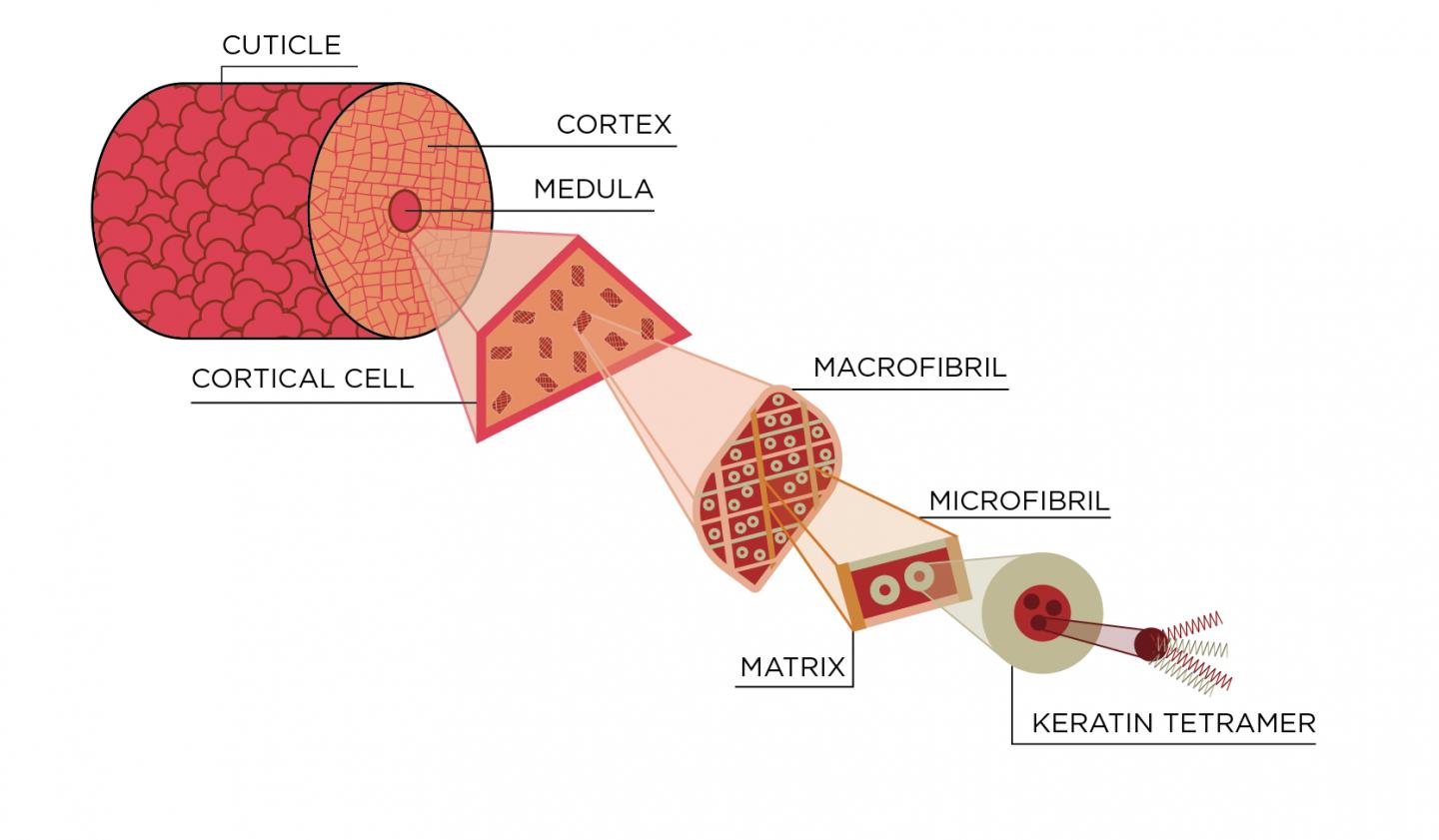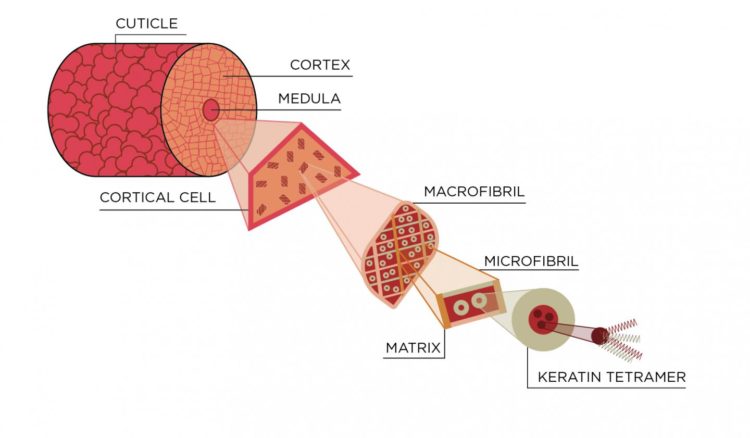Making hair proteomics a practical method for forensic investigation

Credit: N. Hanacek/NIST
In an effort to make hair comparison a more useful technique for investigating crimes, scientists at the National Institute of Standards and Technology (NIST) have developed a new way to dissolve hair proteins without destroying them. Once in solution, the protein molecules from two hairs can be analyzed and compared, yielding objective, quantitative results.
Hair can be an excellent forensic material because it lasts a long time. Even archaeological sites can yield intact hair. Compare that to DNA, which degrades relatively quickly, especially when exposed to the elements.
But the fact that hair is so durable makes it difficult to work with. Hair is made up of protein fibers, called keratins, that are braided together like wires in a cable. Those protein cables are then braided into still larger cables that are difficult to dissolve without losing the keratin.
But, said Zheng Zhang, a NIST research chemist and co-author of the study, “Our method yields enough keratin for analysis even when starting with a very small amount of hair.”
Until now, protocols for dissolving hair keratins required roughly 10 milligrams (mg) of hair, or about 100 5-centimeter (cm) strands — a quantity not likely to be found at a crime scene. The new method, recently described in the Journal of Forensic Sciences, requires only a single 5-cm strand of hair.
Methods for comparing hair proteins will still need to be validated before they can be used in court, where life and liberty may hang in the balance. But this new method for dissolving hair protein removes a major obstacle.
Forensic scientists have been analyzing hair for decades by visually comparing samples under a microscope. In the past, some experts have testified that hair from a crime scene came from a specific individual. Such claims, which may have led to innocent people being wrongly convicted, are no longer considered scientifically valid. Today, microscopic hair comparison is used in a more limited way, not to identify suspects but to rule them out.
In recent years, forensic scientists have also been analyzing a type of genetic material in hair called mitochondrial DNA. This type of DNA can help in an investigation, but unlike regular DNA, it cannot be used to identify an individual.
However, proteomics — the study of all the proteins in an organism or part of an organism, in this case, hair — can be used to identify an individual. Proteins are made up of building blocks called amino acids, which are strung together in a particular sequence, like beads on a string. In hair, those sequences vary slightly from person to person, and because they are coded in our genes, they are permanent features of our identity.
In 2016, researchers at Lawrence Livermore National Laboratory showed that these variations can be used to compare hair proteins with mathematical precision. However, extracting keratin from hair required multiple soakings, grindings and chemical treatments. Because some keratin is lost with each step, a relatively large amount of hair was needed to recover enough of it for analysis.
Through a series of trials, the NIST researchers developed a single-step method that involves heating the hair in a solution with detergent. Because the new process involves only a single step, more protein is recovered from a given amount of hair. Once the keratins are extracted, they can be analyzed using standard methods for proteomic analysis, which involves running them through an instrument called a mass spectrometer.
In addition to developing the new dissolving protocol, the researchers identified 12 new genetically determined variations in human hair. These still need to be verified with genetic studies, but, said NIST research chemist and co-author Meghan Burke, “More points of comparison will mean more precise results.”
Going forward, the researchers hope to identify additional variations in hair proteins. They are also working with geneticists at NIST to map keratin variations to the genetic sequences that give rise to them. That will allow comparisons not only of one hair to another, but of a hair to a DNA sample. In other words, if a hair is found at one crime scene and a bloodstain is found at another, investigators might be able to assess whether they came from the same individual.
“Analyzing hair proteins will allow forensic scientists to answer some very important questions that they couldn’t answer before,” Burke said.
###
Paper: Z. Zhang, M. Burke, W. Wallace, Y. Liang, S. Sheetlin, Y. Mirokhin, D. Tchekhovskoi, S. Stein. Sensitive Method for the Confident Identification of Genetically Variant Peptides in Human Hair Keratin. Journal of Forensic Sciences. Published online Oct. 31, 2019. DOI: 10.1111/1556-4029.14229
Media Contact
Rich Press
[email protected]
301-975-0501
Original Source
https:/
Related Journal Article
http://dx.





